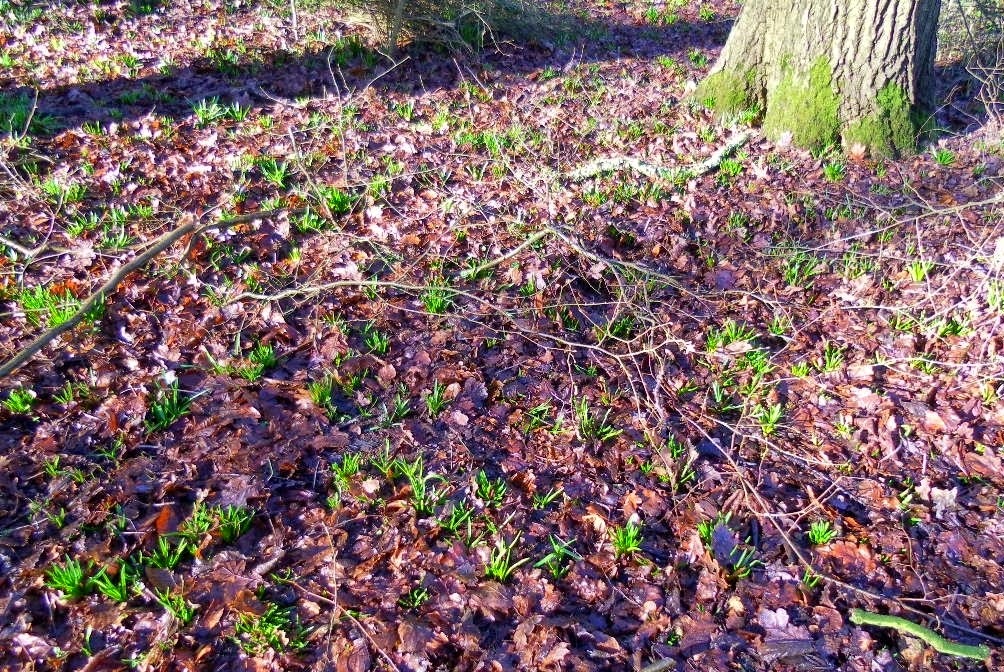Today was
one of those occasions when volunteers had to be kept well away from the
neighbours.
This was one
of the neighbours’ houses:
Green-Gymmers
had to be set a task well away from them not because our activities would have
disturbed them, but because they would have been constantly distracting
us. This on the way to our work-site:
And these
were next door’s children, having a wonderful time in the great outdoors,
getting thoroughly messy from head to hoof:
Pigs in their natural habitat – woodland – are a rare sight nowadays. These ones were very happy pigs.
Our task was
to help bring back old woodland to coppicing rotation. In the early 20th century the area probably
had been managed for coppicing (hazels and some standards). That the woodland is old, is shown by the
presence of bluebells – yes, proper English bluebells:
Come
March/April, this woodland floor will be a haze of blue:
In the
meantime, there were old trees to be cut back.
Here is one which had been done earlier:
Note the
brash piled round the base (to obviate depredation by deer), and some leading
shoots left so that the tree can regenerate (even if some hungry deer do get
through the defences). During the
extensive briefing we were told, “There are more deer in the UK now than ever
in history.”
Cut wood was
recycled, according to size/straightness, as:
- Stakes and
binders for use in hedge-laying
- Logs for
firewood
- Brash to put
round the stumps
- Material for brash piles neatly constructed so as not to intrude on bluebell habitat
This
involved much use of time-honoured tools and methods. Here a happy Green-Gymmer deploying a
billhook:
There was
much instruction given on the angle at which to wield one’s billhook. “A 33⁰ angle” definitely came into it
somewhere …
There were
also some interesting alternative uses of tools. This, for example, is not a billhook
carelessly left on a stump. It is for
cutting lengths of string:
And this is
not a hurdle for a hedgehog gymkhana …
nor a hoop
for an extreme version of croquet. It is
for holding a bundle of sticks off the woodland floor, while the length of
string is tied round:
The
soundscape included, to our delight, the extraordinary sound of happy pigs
sleeping it off (who knew pigs could snore so loudly?) and a woodpecker
drumming,
on a tree, as it should.
Apparently the way to identify the species of
woodpecker is to remember that a Great Spotted Woodpecker produces a short ‘drum-roll’,
and the Lesser Spotted a long one; while the Green Woodpecker is the one which
laughs at you.
“Yes, there’s
one at the golf course which does that,” volunteered one Green-Gymmer: “It
laughs even before you’ve putted.”
– “You’re
not supposed to putt with a woodpecker,” came the rejoinder: “You’re supposed
to use a club.”
Green-Gym itself
perhaps bears the same sort of relationship to normal horticulture.
For it has been described as “a combination
of extreme gardening and walking, plus just being out in the great outdoors” –
in the right kit, of course. Except that
at Green Gym the range of ‘right kit’ varies from the old-&-battered-and-it-doesn’t-matter-if-it-gets-torn-and-muddy
to the real town & country look:
All are
equally welcome at Green Gym!




























